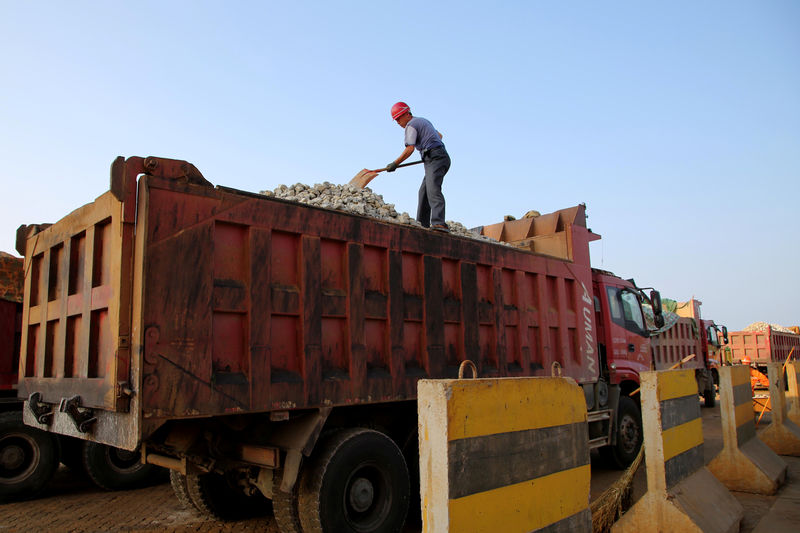BEIJING (Reuters) - The spread between seaborne iron ore heading to China and iron ore at China's ports has widened to the highest in at least two years, following an increase in shipments from Australia and Brazil as disrupted mines gradually come back on track.
The average for the month of August so far of the price difference between seaborne iron ore with 62% iron content and supplies at Chinese ports was $9.42 a ton as of Monday, S&P Global (NYSE:SPGI) Platts data showed. That is the highest monthly average spread since the price reporting agency began publishing iron ore prices for China's ports in August 2017.
Spread between seaborne and port iron ore prices in China - https://fingfx.thomsonreuters.com/gfx/ce/7/6121/6104/iron%20ore%20spread.jpg
The widening spread between seaborne iron ore prices and port prices indicates that more cargoes are underway and mills are wary to make offers given the uncertainties in macro-economy, said four sources with knowledge of the market.
In July, Brazilian miner Vale SA (SA:VALE3) was allowed to partially resume dry processing operations at its Vargem Grande complex, which will add 5 million tonnes of annual production. The site was shut to check the stability of its tailings dams following a fatal dam disaster at another Vale mine in Brazil in January.
Australian ports have also ramped up shipments since Cyclone Veronica hit in late March. Iron ore exports to China from Australia's Port Hedland in April slipped 4.2% from a year earlier to 34.6 million tonnes but rebounded by June to 42 million tonnes, 5.9% higher than a year earlier.
Vessel-tracking and port data compiled by Refinitiv show that a total of 103.65 million tonnes of iron ore is scheduled to arrive in China in August, the highest in at least two years.
With increasing supplies, traders and analysts also pointed out that mills have become picky and now favor raw material with low phosphorous content, namely the iron ore fines from Rio Tinto Plc (L:RIO) and BHP Group Plc (L:BHPB).
Inventories of imported iron ore at Chinese ports have risen to 124.65 million tonnes as of Aug. 26, the most since late May, data compiled by SteelHome showed.
The weak Chinese currency, with the spot yuan (CNYUSD=R) falling to a 11-1/2 year low amid the intensifying trade confrontation between the United States and China, are making cost of seaborne iron ore more expensive.
"The uncertainties (of the economic and political situation) are drifting buyers away from taking seaborne cargos. People don't know how much yuan would fall, so they tend to take small volume from port to reduce exposure to risks," said Richard Lu, an analyst at CRU in Beijing.
Chinese Yuan vs Spot iron ore prices - https://fingfx.thomsonreuters.com/gfx/ce/7/6102/6085/CNY%20vs%20Iron%20ore.jpg
China and the United States on Friday unveiled a fresh round of retaliatory tariffs on billions worth of imports from their counterpart, sending stock markets around the globe into sea of red on Monday.
Tepid steel demand and thin margins at mills have also pressured iron ore prices.

Benchmark spot rebar prices fell to a 16-month low of 3,670 yuan ($517.43) a ton on Monday, data tracked by SteelHome showed.